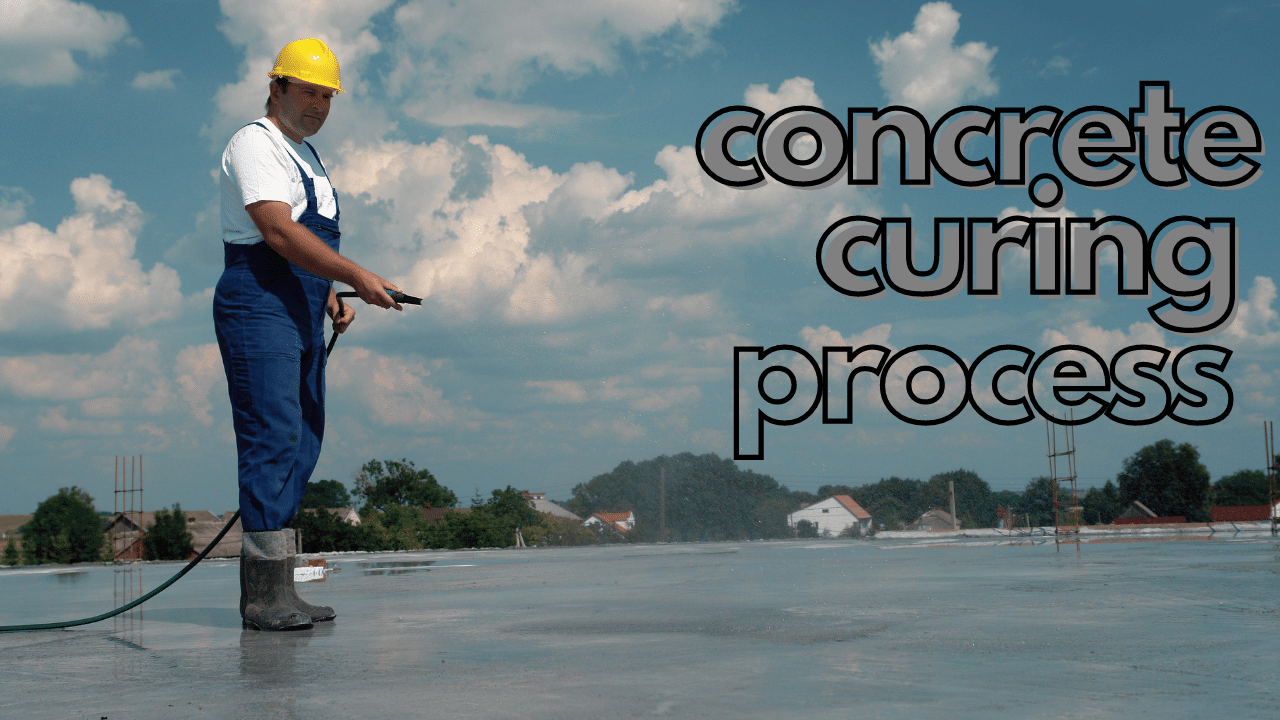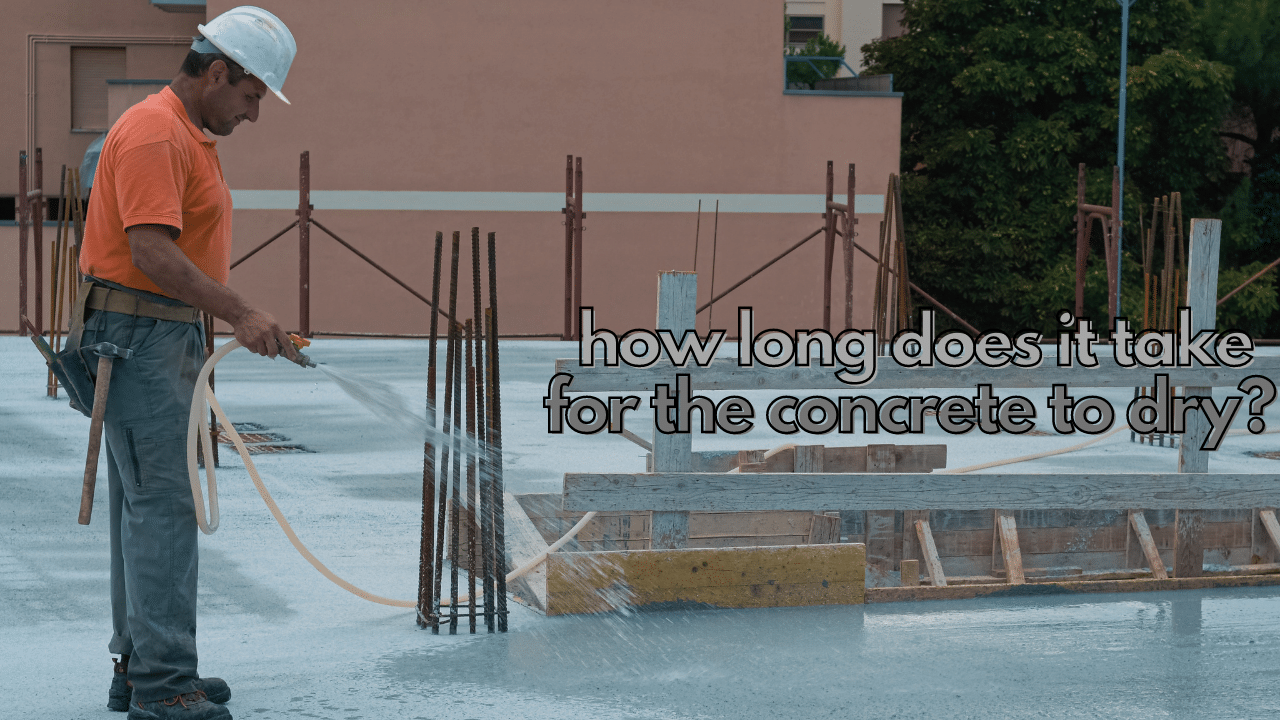Waiting for your concrete to cure completely before utilizing it is so important. If you’re too quick to place heavy objects on your concrete after laying it, you will affect its structural integrity and may even cause it to crack.
Most concrete slabs are safe to walk on 1-2 days after the concrete has been poured, but this is only the start of the equation. It typically takes just shy of a month for concrete to cure completely, to be sure of its structural soundness.
To ensure you leave sufficient time for your concrete to cure, this guide explains in depth how long it takes for concrete to dry and explains the curing process in depth. We also introduce you to some of the factors that affect concrete curing times, so you can properly plan your upcoming project.
Concrete Curing/Drying Times Overview
Curing vs. Drying: What’s the Difference?
To begin, we need to introduce the difference between concrete curing and drying, as they’re different processes.
Curing refers to the time it takes for your concrete to strengthen, whereas drying is concerned with the amount of time it takes for the water within the mixture to evaporate through its surface.
You will often see the terms used interchangeably, but making the distinction between each is crucial. Ultimately, it can take concrete many months to dry, but it’s implausible to wait until your concrete is bone dry before using it.
That’s why people tend to be more concerned with the curing process, as this refers to the period of time you need to wait until your concrete is sufficiently strengthened and ready to use.
The Concrete Curing Process Explained
For concrete to reach its peak strength and to develop the properties that attracted you to it in the first place, it needs sufficient time to cure.

Concrete achieves its strength throughout the curing process, as rock-hard crystals develop within the mixture that binds the various components together.
Critical to the curing process is hydration, which is why you often see people adding moisture to the surface of newly laid concrete. Ultimately, if there isn’t sufficient hydration within your concrete mix, the components are unable to bind together.
Another essential aspect of concrete curing time is temperature, and your concrete slab shouldn’t be too hot or too cold. The hydration process slows down when concrete is outside the optimum temperature range, as we explain in more detail a little later on.
But once you’ve laid your concrete, you will need to decide on a suitable curing process to ensure the 28 days after the laying of your slab are correctly managed and your concrete has sufficient time to dry. (Related: Mudjacking To Level Your Concrete: We Breakdown The Costs)
Common Concrete Curing Methods
- 1Water Cure - Upon completion of the concrete slab, it can either be flooded or mist sprayed. This is an effective way of preventing water evaporation and allows the hydration and strengthening process to occur without interruption.
- 2Water Retaining Approaches - Instead of spraying the concrete with additional moisture, you can opt to cover it with sand, canvas, or straw to ensure it is able to retain its moisture levels. Still, you need to ensure the materials you lay on top of the slab are kept moist throughout the curing process.
- 3Seal Application - After 24 hours, you can opt to apply a waterproof paper or plastic film seal to your concrete slab. It’s important to note that this can sometimes lead to the discoloration of your slab, so it’s not an ideal option for driveways where the appearance of concrete is paramount.
- 4Chemical Membranes - Another way that you can cure your concrete is to apply chemical membranes to the slab immediately after pouring. Again, this approach isn’t suitable across the board, as the chemicals may affect the adherence to certain types of resilient flooring.
Whichever approach you opt for, remember that moist-cured concrete is typically 50% stronger than uncured concrete. Applying a water cure to your concrete slab for just seven days after laying it will undoubtedly increase its strength.
Factors Affecting Concrete Drying Time
As you can see the curing process involves adding moisture to the surface of your concrete, which seems counterintuitive when mentioned in the same breath as drying! But it’s so important to cure your concrete and it would be foolish to leave it uncured to try and save a little bit of time.
What’s more, there are also various factors that you need to take into account likely to affect the drying and curing time of your concrete slab. We run through some of the things you need to consider below.
Climate
For your concrete slab to dry and cure efficiently, the climate needs to be ideal. Typically, poured concrete should be kept between 50 – 85F where possible. If concrete is laid when it’s too cold, hydration will slow down.
Conversely, hot concrete causes the hydration process to go too fast, which leads to temperature differentials that can cause the surface of your concrete to crack. The bottom line is that if the climate isn’t suitable, your concrete slab won’t bond and strengthen as it should.
Concrete Type
There are so many types of concrete available for your home construction project, and the type that you opt for will affect its curing and drying time. Common types include modern, high-strength, high-performance, ultra-high performance, stamped, self-consolidating, and shotcrete.
Modern concrete is the most widely used type for home use and is a combination of cement, water, and sand. If you opt for modern concrete, then the above drying and curing times are applicable. However, if you’re laying a lightweight concrete, the timeframe is likely to be extended.
Moisture Content
The ratio of your concrete mixture will also affect drying time. The more water within the mixture, the longer it will take to evaporate through the surface of the slab. If you’re mixing the concrete yourself, it’s so important to get the composition right.
You should always follow the manufacturer’s guidance when you’re mixing your concrete yourself. If you’re unsure of the correct composition, it’s worthwhile consulting a local building firm to help you.
How to Speed Up the Drying Time of Your Concrete
Although you should be sure to allow sufficient time for your concrete to sufficiently cure and dry, there are a few things you can do to ensure you don’t have to wait for an eternity for your slab to be usable. Below are some tips that will help speed things along:
The Verdict: How Long Does It Take for Concrete to Dry?

As a general rule of thumb, most concrete slabs will be sufficiently dry to walk on within 24-48 hours. But be mindful that you will need to wait at least one week before placing any heavy objects on your slab and then 28 days until it’s completely safe to use without restriction.
It’s crucial that you consider both the curing and drying of your concrete, as neglecting the curing process will cause your concrete to be weaker and more prone to cracks.
Striking a balance between both and allowing your concrete sufficient time to settle, cure, and then dry will ensure you have a concrete slab that is robust, durable, and less likely to need replacing in the near future.
